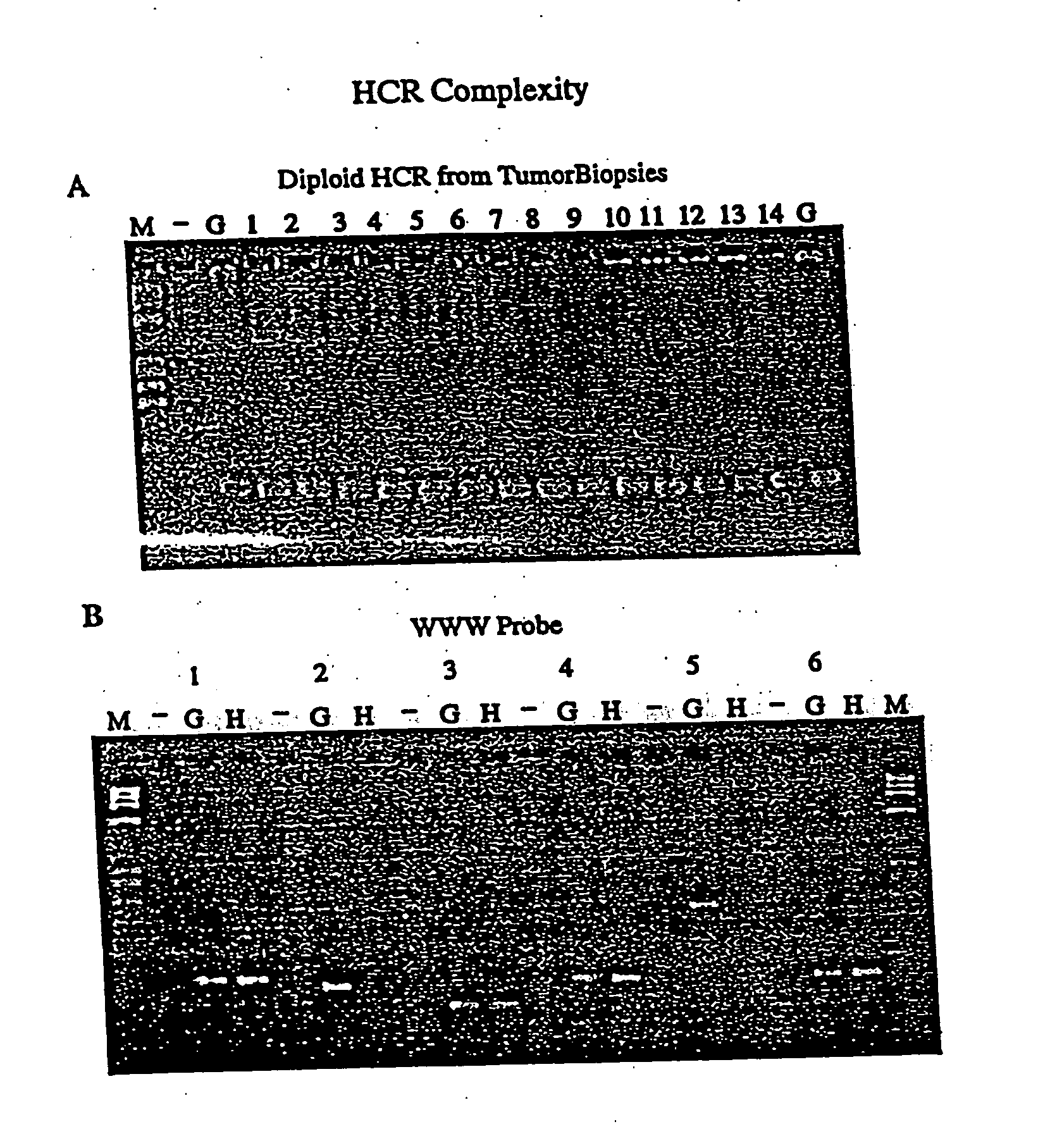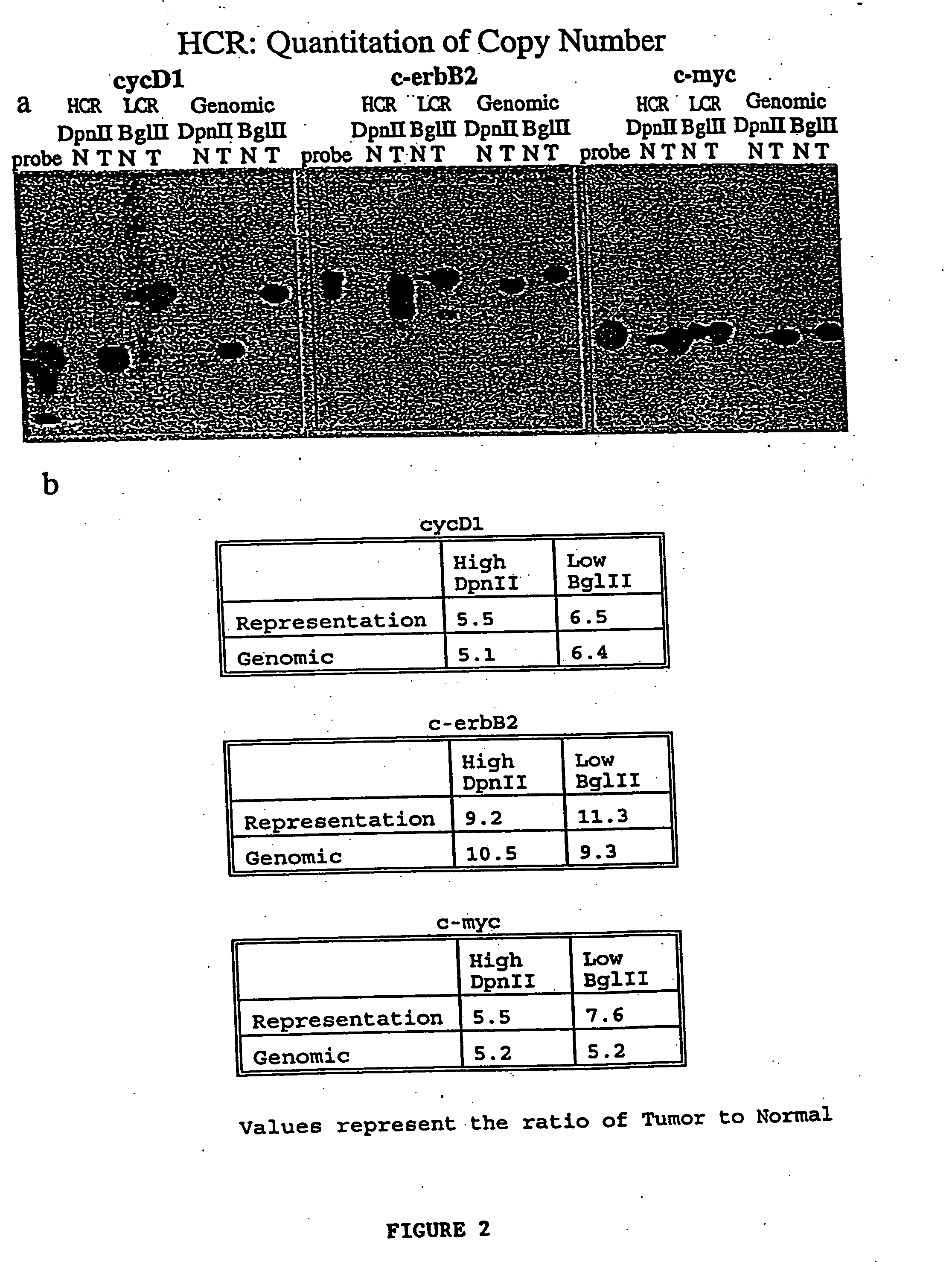Use of representations of DNA for genetic analysis
a technology of dna and genetic analysis, applied in the field of genetic analysis, can solve the problems of inefficiency and incomplete one-by-one query method, inability to interpret data obtained, and high difficulty in correlation with disease process, and achieve the effect of improving the accuracy of results and avoiding errors
- Summary
- Abstract
- Description
- Claims
- Application Information
AI Technical Summary
Benefits of technology
Problems solved by technology
Method used
Image
Examples
Embodiment Construction
[0043] The present invention provides for the use of simple and compound representations of DNA in microarray technology. Representations are used to obtain a reproducible sampling of the genome that has reduced complexity. A representational protocol initiates with restriction endonuclease cleavages followed by ligation of oligonucleotides to the cleaved DNA. Ultimately, these oligonucleotides are used for a gene amplification protocol such as PCR. The resulting representation can be advantageously applied to microarray technology as both the arrayed probe and hybridized sample.
[0044] Other protocols to produce a sampling of the genome of reduced complexity exist, but are not readily adaptable to microarray technology. The two most common methods are whole genome amplification (Telenius et al., 1992, Genomics 13:718-25; Xu et al., 1993, Hum Reprod. 8:2206-10; Kristjansson et al., 1994, Nat Genet 6:19-23; Sun et al., 1995, Nucleic Acids Res 23:3034-40; Xiao et al., 1996, Cytogenet ...
PUM
| Property | Measurement | Unit |
|---|---|---|
| concentration | aaaaa | aaaaa |
| concentration | aaaaa | aaaaa |
| concentration | aaaaa | aaaaa |
Abstract
Description
Claims
Application Information
 Login to View More
Login to View More - R&D
- Intellectual Property
- Life Sciences
- Materials
- Tech Scout
- Unparalleled Data Quality
- Higher Quality Content
- 60% Fewer Hallucinations
Browse by: Latest US Patents, China's latest patents, Technical Efficacy Thesaurus, Application Domain, Technology Topic, Popular Technical Reports.
© 2025 PatSnap. All rights reserved.Legal|Privacy policy|Modern Slavery Act Transparency Statement|Sitemap|About US| Contact US: help@patsnap.com



